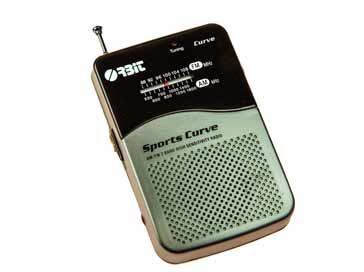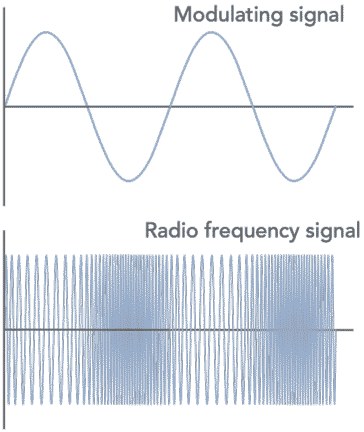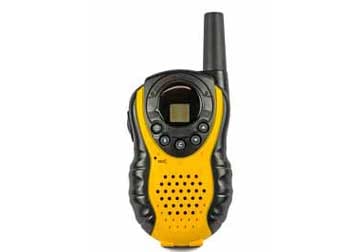What is Frequency Modulation, FM
Frequency modulation, FM, is used in many applications from broadcasting to communications and offers several advantages over other modes.
Frequency Modulation Tutorial Includes:
Frequency modulation, FM
Modulation index & deviation ratio
FM sidebands, bandwidth
FM demodulation
FM slope detector
FM ratio detector
Foster Seeley detector
PLL FM demodulator
Quadrature demodulator
MSK
GMSK
Modulation formats:
Modulation types & techniques
Amplitude modulation
Phase modulation
Quadrature amplitude modulation
While changing the amplitude of a radio signal is the most obvious method to modulate it, it is by no means the only way and frequency modulation is another technique that can be used.
By changing the frequency of a signal to give frequency modulation or FM which has many advantages and it is used for broadcasting and radio communications, especially above frequencies of around 30 MHz.

Although frequency modulation may not be quite as straightforward as amplitude modulation, nevertheless it offers some distinct advantages.
FM is able to provide near interference free reception, and it was for this reason that it was adopted for the VHF sound broadcasts. These transmissions could offer high fidelity audio, and for this reason, frequency modulation is far more popular than the older transmissions on the long, medium and short wave bands.
In addition to its widespread use for high quality audio broadcasts, FM is also used for a variety of two way radio communication systems. Whether for fixed or mobile radio communication systems, or for use in portable applications, FM is widely used at VHF and above.
In addition tot his, FM can sometimes be used for other forms of wireless communication, as there are many sort range devices being used for a variety of jobs.
What is frequency modulation, FM?
As the name indicates, frequency modulation is varies the frequency of the carrier in line with the intensity of the modulating signal, which may often be audio, but may be any form of signal.
The frequency of the signal is a linear function of the modulating signal, so it is possible to see the variations on amplitude and time plot as below.
In this it can be seen that the frequency changes as the instantaneous level of the modulating signal changes.

When the audio signal is modulated onto the radio frequency carrier, the new radio frequency signal moves up and down in frequency. The amount by which the signal moves up and down is important.
It is known as the deviation and is normally quoted as the number of kilohertz deviation. As an example the signal may have a deviation of plus and minus 3 kHz, i.e. ±3 kHz. In this case the carrier is made to move up and down by 3 kHz.
Broadcast stations in the VHF portion of the frequency spectrum between 88.5 and 108 MHz use large values of deviation, typically ±75 kHz. This is known as wide-band FM (WBFM). These signals are capable of supporting high quality transmissions, but occupy a large amount of bandwidth. Usually 200 kHz is allowed for each wide-band FM transmission.
For communications purposes less bandwidth is used. Narrow band FM (NBFM) often uses deviation figures of around ±3 kHz and often has a bandwidth of 25, kHz, 10kHz or sometimes less.
It is narrow band FM that is typically used for two-way radio communication applications. Having a narrower band it is not able to provide the high quality of the wideband transmissions, but this is not needed for applications such as mobile radio communication.

Frequency demodulation
As with any form of modulation, it is necessary to be able to successfully demodulate it and recover the original signal. The FM demodulator may be called a variety of names including FM demodulator, FM detector or an FM discriminator.
There are a number of different types of FM demodulator, but all of them enable the frequency variations of the incoming signal to be converted into amplitude variations on the output. These are typically fed into an audio amplifier, or possibly a digital interface if data is being passed over the system.
FM modulators
There is a variety of different methods that can be used to generate frequency modulated signals.
- Varactor diode oscillator: This method simply requires the use of a varactor diode placed within the tuned circuit of an oscillator circuit. It is even possible to use a varactor diode within a crystal oscillator circuit. Typically when crystal oscillators a re used the signal needs to be multiplied in frequency, and only narrow band FM is attainable.
- Phase locked loop: Phase locked loops provide an excellent method of generating frequency modulation. It is often necessary to manage the constraints within the loop carefully but once done it provides and excellent solution.
Frequency modulation advantages & disadvantages
As with any form of modulation there are several advantages and disadvantages to its use. These need to be considered before making any decision or choice about its use:
Advantages of frequency modulation, FM:
In view of the many advantages of frequency modulation it has been widely used for high quality audio broadcasting as well as two way radio communications as well as a number of other applications.
Resilience to noise & signal variations: One particular advantage of frequency modulation is its resilience to signal level variations. The modulation is carried only as variations in frequency. This means that any signal level variations will not affect the audio output, provided that the signal does not fall to a level where the receiver cannot cope.
As a result this makes FM ideal for mobile radio communication applications including more general two-way radio communication or portable applications where signal levels are likely to vary considerably.
The other advantage of FM is its resilience to noise and interference. This again results from the fact that noise tends to be an amplitude variation and therefore these can be ignored in the receiver. It is for this reason that FM is used for high quality broadcast transmissions.
Easy to apply modulation at a low power stage of the transmitter: Another advantage of frequency modulation is associated with the transmitters. It is possible to apply the modulation to a low power stage of the transmitter, and it is not necessary to use a linear form of amplification to increase the power level of the signal to its final value.
It is possible to use efficient RF amplifiers with frequency modulated signals: It is possible to use non-linear RF amplifiers to amplify FM signals in a transmitter and these are more efficient than the linear ones required for signals with any amplitude variations (e.g. AM and SSB).
This means that for a given power output, less battery power is required and this makes the use of FM more viable for portable two-way radio applications.
Disadvantages of frequency modulation, FM:
Like all schemes and techniques, frequency modulation has soem disadvantages and these need to be considered when it is likely that FM may be used.
- FM has poorer spectral efficiency than some other modulation formats: Some phase modulation and quadrature amplitude modulation formats have a higher spectral efficiency for data transmission than frequency shift keying, a form of frequency modulation. As a result, most data transmission system use PSK and QAM.
- Requires more complicated demodulator: One of the minor disadvantages of frequency modulation is that the demodulator is a little more complicated, and hence slightly more expensive than the very simple diode detectors used for AM. However this is much less of an issue these days because many radio integrated circuits incorporate a built in frequency demodulator .
- Some other modes have higher data spectral efficiency: Some phase modulation and quadrature amplitude modulation formats have a higher spectral efficiency for data transmission that frequency shift keying, a form of frequency modulation. As a result, most data transmission system use PSK and QAM.
- Sidebands extend to infinity either side: The sidebands for an FM transmission theoretically extend out to infinity. They are normally significant for wideband frequency modulation transmissions, although small for narrow band FM. To limit the bandwidth of the transmission, filters are often used, and these introduce some distortion of the signal. Normally this is not too much of an issue although care has to be taken to include these filters for wideband FM and to ensure they are properly designed.
How FM was introduced
In the early days of radio, static was a major issue and the way everyone tried to reduce the effects of static was to reduce the bandwidth - in this way less noise was picked up by the receiver.
An American engineer named Edwin Armstrong was investigating this issue and whether frequency modulation, rather than amplitude modulation might provide an advantage.
Around 1928, Armstrong started to develop the concept of using FM, and rather than reducing the bandwidth, he increased it.
Many did not go along with Armstrong's ideas for a variety of reasons. He approached RCA, and although they were impressed, they was focussing upon television and did not want to divert any resource onto a new form of broadcasting.
After many difficulties along the way, Armstrong launched his own radio station in 1939 to demonstrate the effectiveness of FM. To accommodate this and other stations following on the FCC allocated a band of frequencies between 42 and 50 MHz. Others soon followed, but after the war, the FCC in the USA, changed the allocated frequency band to the one we know today between 88 and 108 MHz. Although there was some initial pain because a few hundred thousand radios had been sold, the band was accepted globally and it is the VHF FM band we know today.
With FM established as a medium for high quality broadcasting, it quickly developed.
In addition to this a form of narrow band FM became popular for VHF and UHF mobile communications. The nature of FM meant that signal strength variations did not affect the operation nearly as much as if it had been an AM signal.
Modulation index & deviation ratio
When using a frequency modulated signal it is very helpful to have a measure of what is effectively the level of the modulation.
This is useful in defining parameters like whether the signal is a narrow band or a wide band frequency modulated signal. It is also very useful in ensuring that all transmitters or receivers in a system are set to accommodate a standardised level of modulation as it affects parameters like the receiver bandwidth, channel spacing and the like.
To define the level of modulation, figures known as the modulation index and deviation ratio are used.
FM bandwidth
One of the key elements of an FM signal is its bandwidth. With any frequency modulated signal, sidebands extend out either side. These actually extend out to infinity, but the intensity of them falls away. Fortunately it is possible to limit the bandwidth of an FM signal without affecting its quality unduly.
Frequency modulation is widely used in many areas of radio technology including broadcasting and areas of two way radio communication. In these applications its particular advantages can be used to good effect.
Whilst other forms of modulation are being used in many areas, FM still offers the highest quality for broadcasting and many advantages for other forms of communication as well.
More Essential Radio Topics:
Radio Signals
Modulation types & techniques
Amplitude modulation
Frequency modulation
OFDM
RF mixing
Phase locked loops
Frequency synthesizers
Passive intermodulation
RF attenuators
RF filters
RF circulator
Radio receiver types
Superhet radio
Receiver selectivity
Receiver sensitivity
Receiver strong signal handling
Receiver dynamic range
Return to Radio topics menu . . .


